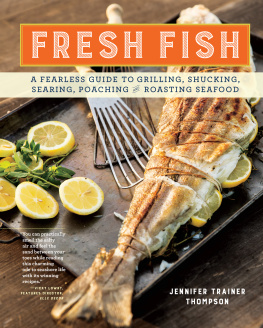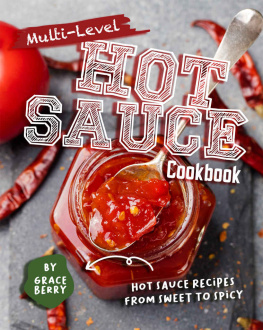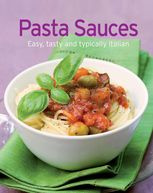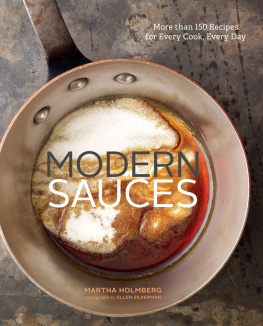Hot Sauce!
TECHNIQUES FOR MAKING SIGNATURE HOT SAUCES
Jennifer Trainer Thompson

acknowledgments
A whole lot of shakings going on with a book like this. A hot-felt thanks to my delightful recipe tester (and sometime developer) Jody Fijal, Storey creative director Alethea Morrison, editor Sarah Guare, as well as my partner in heat: Joe Thompson.
The mission of Storey Publishing is to serve our customers by
publishing practical information that encourages
personal independence in harmony with the environment.
Edited by Margaret Sutherland and Sarah Guare
Art direction and book design by Alethea Morrison
Text production by Liseann Karandisecky
Cover photography by Tara Donne, except for authors photo by Jennifer Mardus
Interior photography by Tara Donne, except as noted on
Photo styling by Martha Bernabe
Food preparation by Jody Fijal
Color map, , by John Coulter
Indexed by Christine R. Lindemer, Boston Road Communications
The recipes Tomato Ketchup, , are reprinted with permission from Tabasco: An Illustrated History by Shane K. Bernard and Paul C.P. McIlhenny.
2012 by Jennifer Trainer Thompson
All rights reserved. No part of this book may be reproduced without written permission from the publisher, except by a reviewer who may quote brief passages or reproduce illustrations in a review with appropriate credits; nor may any part of this book be reproduced, stored in a retrieval system, or transmitted in any form or by any means electronic, mechanical, photocopying, recording, or other without written permission from the publisher.
The information in this book is true and complete to the best of our knowledge. All recommendations are made without guarantee on the part of the author or Storey Publishing. The author and publisher disclaim any liability in connection with the use of this information.
Storey books are available for special premium and promotional uses and for customized editions. For further information, please call 1-800-793-9396.
Storey Publishing
210 MASS MoCA Way
North Adams, MA 01247
www.storey.com
Printed in China by R.R. Donnelley
10 9 8 7 6 5 4 3 2 1
Library of Congress Cataloging-in-Publication Data
TK
We have the go-ahead from Jen to circ without it.
CONTENTS
PREFACE
Perhaps no other food in history has inspired such a cult following fanaticism, really. Hot sauce is good for you. Its hot. Its funny. Its obscene. Its flavorful. Its addictive. Can you imagine people speaking of mustard with such passion? Creating olive oil labels with such hilarity? Driving miles out of their way on a road trip for, say, pickles?
My own personal trail of flame started like many: a chance encounter with an unmarked bottle. Four months out of college, I hitched a ride as crew on a Hinckley Bermuda 40 heading south for the winter from Mount Desert Island, Maine, to the British Virgin Islands. (For armchair sailors, thats like being asked to drive a vintage Ferrari the length of the Amalfi Coast.) And I got paid for it. We sailed our way down the rocky New England coast, rocketed on an 11-knot breeze past Asbury Park, snaked down the Intracoastal Waterway, and then headed to sea from West Palm Beach. Two days out, our mast stay broke, and we were forced to land on San Salvador (not the Central American capital of El Salvador, but rather the tiny Bahamian island that Columbus landed on in 1492).
Tropical, isolated, and with no discernable tourism industry, San Salvador had one pay phone (which was out of service; this was before cell phones) and several dirt-floor bars along the beach that served food. After taking our first shower in days, we headed for the bar, which had Bob Marley and every Rolling Stones song known to man on its outsized jukebox. It was heaven. We ordered a round of rum punches and fritters, and when they arrived with no tartar sauce, I doused my food liberally with the only condiment on the table: an innocuous-looking yellow sauce in a ketchup bottle. Having been at sea, I was hungry for fried food and wolfed down the first few bites. And it was then and there that I discovered Scotch bonnet peppers.
At first my mouth felt hot, then the heat started billowing, then I thought it would tear the roof off the top of my mouth. My friends, who had sailed these seas before, howled with laughter as tears streamed down my cheeks and beads of sweat collected on my brow. But after the scorching heat came the taste of the hot pepper sauce loads of fruity, curried, tropical flavor that danced and sang its way through my food. I was in awe (that is, when I could speak again). Once I got past the pain, it tasted rather good.
Soon I was shaking hot sauce on almost all foods, from pizza to rice and beans. I did several more boat deliveries and quickly learned the beauty of hot sauce on a boat: With limited galley space, hot sauce is an efficient all-around condiment and substitute for a shelf of spices, and it dresses up everything from chowder to chow mein. I was startled to discover that hot sauce adds flavor, not just heat (although thats good, too). I was hooked.
A tenth-generation Yankee, I felt a long way from my childhood, where the only hot sauce in the house was a sketchy-looking old bottle of Tabasco sauce that was relegated to the liquor cabinet, brought out judiciously on special occasions for Bloody Marys.
We sailed to various islands in the British Virgin Islands, and I noticed that most bars, restaurants, and roadside stands had their own brand of hot pepper sauce, as its called there, reflecting the individual predilections of their makers as much as the colonizing influences that shaped the culinary heritage of the West Indies.
After a few more deliveries, I packed a dozen sauces (several of which exploded in my suitcase) as gifts for friends, flew north, and settled into life on the island of Manhattan, where I got a job as a lowly editors assistant at Simon & Schuster. I continued to douse hot sauce on just about everything (ones first New York City apartment is comparable in size to a galley kitchen if youre lucky), and went to work on my brilliant career, not thinking about them further.
It wasnt until seven years later, when I began working with a friend on a book about cooking on boats, that hot sauces came back into focus in my life. The Yachting Cookbook rekindled my love affair with hot pepper sauces, as did the fact that Id begun to spend time on the Spanish island of Vieques and had come to know the makers of Isla Vieques Condiment Company, who bottled their wonderful sauces in discarded rum flasks.
In 1991, I approached three New York publishers to write a book about hot sauces. They all told me that no one would buy it (too obscure, too spicy, too weird... whats hot sauce?) and to concentrate instead on salsa. Salsa, of course, was trucking past ketchup as Americas #1 condiment, but since three culinary icons were already writing salsa books, that didnt interest me.
By then I was deep into hot sauce. On trips to New Mexico, Louisiana, and the Caribbean, my husband, Joe, and I collected and compared brands: not only the traditional southern sauces but also obscure and regional concoctions whose names 911, Inner Beauty, Bessies Soul Sauce suggest the obsession, humor, and nirvana that hot sauces induce. By then, I had amassed a large collection of sauces and found that when guests came for dinner, I couldnt get them out of my pantry; theyd just stand and stare at the labels of the bottles on my shelves, laughing. There was Last Rights, featuring a deceased chile pepper in a coffin; Capital Punishment (legal in all 50 states), which illustrated the same chile in an electric chair; Inner Beauty; Hellfire & Damnation; and my all-time favorite: I Am on Fire Ready to Die.








